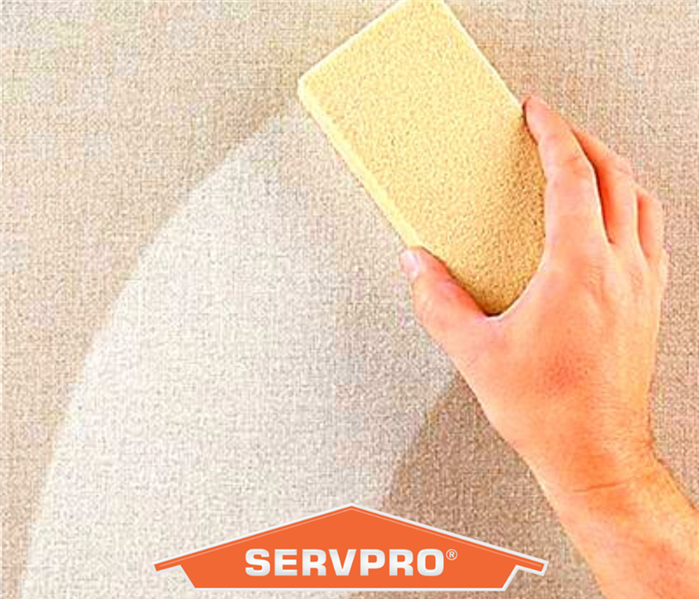Ghosting: How to Remove Light Soot (Part 2)
11/18/2021 (Permalink)
 Dry cleaning sponges (also known as chemical sponges) are specifically designed to absorb residue, which makes them perfect for cleaning soot.
Dry cleaning sponges (also known as chemical sponges) are specifically designed to absorb residue, which makes them perfect for cleaning soot.
In our last blog, we covered Ghosting; the subtle soot damage often caused by candle burning. Now that we know how to prevent candle soot, let's discuss how to remove it.
The acidic nature of soot makes it difficult to remove. Methods will vary depending on the material that was burned and the surface type. If you’re dealing with heavy soot, you’ll want to contact the professionals at SERVPRO of Society Hill. For light candle soot on walls, follow these steps:
- Create ventilation. Soot can irritate your lungs. Start by opening a window, turning on a fan, and opening vents.
- Wear personal protective gear. Protect your eyes, skin, and lungs from particles with safety glasses, gloves, and a mask.
- Pull furniture away from the affected area(s). This will prevent loosened particles from settling on your belongings.
- Use a dry cleaning sponge. Soot is easy to smear, so if you use a regular sponge, you’ll push it farther into the wall and cause a permanent stain. Dry cleaning sponges (also known as chemical sponges) are specifically designed to absorb residue, which makes them perfect for cleaning soot. They’re widely available in hardware stores, cleaning supply stores, and online.
- Wipe, don’t scrub. The key to removing soot is to wipe it, as scrubbing will only cause it to spread. Us downward and overlapping strokes to wipe the wall. After each stroke, check the sponge. When it becomes clogged and full of soot, flip it over and use the clean side. Switch to a fresh sponge as necessary. Do not rinse the sponge with water or it will become unusable for cleaning soot.
- Once the soot is removed, treat the remaining stain. Use a degreaser, such as a dish detergent. In a clean bucket, mix 2 tablespoons of liquid detergent with ½ gallon of water. Dampen a sponge in the mixture and use it to clean the stain. Gently rinse with water.
- Dry. Use a towel or rag to dry the area, then allow it to air dry for several hours.
- Vacuum. Use the long nozzle attachment on your vacuum to ensure any loose particles are removed.
Remember, this method only applies to removing soot from a lightly damaged section of wall. Attempting to remove heavy soot yourself can be dangerous. The professionals at SERVPRO of Society Hill are experts in smoke and soot removal, as well as odor abatement. For your complimentary cleaning estimate, call 215-772-1203.






 24/7 Emergency Service
24/7 Emergency Service